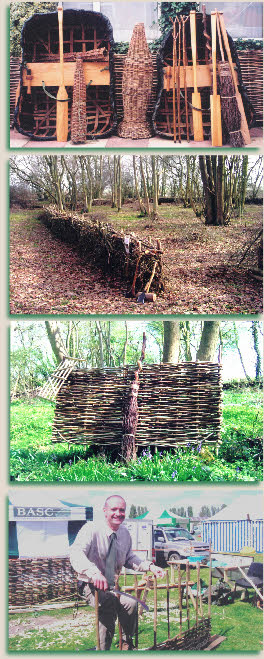
For a number of years I was involved in traditional coppicing and coppice crafts, primarily in the Lincolnshire Limewoods SSSI. This came about through a desire to ‘give something back’, whilst producing saleable craft items such as wattle hurdles and besom brooms which along with bean poles and pea sticks etc, had a more general market than coracles. Also self employed traditional woodland management offered a back door route into conservation work which always seemed to require a fistful of academic qualifications rather than the wealth of ‘hands on’ practical skills and natural history knowledge I had.
To this day I still don’t understand why a job that at one time would have been the preserve of the woodsman or estate worker now requires a ‘countryside management degree’. Nor at one time would a £5 million public liability insurance policy and a risk assessment be required to coppice small diameter round wood such as hazel, ash and birch which were my main craft materials.
It was however the lack of funded support for renovating neglected coppice, despite all of the conservation, amenity and heritage benefits of such work, along with too many people wanting something for nothing that ‘did for me’ in the woods. As someone more dedicated to the skilled bending and cleaving crafts such as wattle hurdle making, activities such as firewood and charcoal making that were better suited to neglected coppice, wasn’t really my thing and required capital upfront to purchase kilns and delivery vehicles, whilst still providing a poor return for a family man with responsibilities. I also must take some blame for always being a craftsman first and a businessman second as is the case with my other activities. As much as I enjoyed working the woods and working up the hurdles, doing what was essentially unpaid conservation work was never going to work in the long term. In 2005 things came to a head and I was fortunately thrown a lifeline by Network Rail who gave me the opportunity to do the best job in the World, and one which pays a living wage.
Today, I still keep my hand in with a bit of personal hurdle making along with the working up of a few thumb sticks, besom brooms and traditional catapult forks. I am also possibly one of the last craftsmen making traditional fenland eel hives as well as salt water eel grigs. I also make the occasional bow, another crossover from my wilderness survival skills. Naturally my primary crafts of cleft wood and hazel and hide coracle making continue very strongly but on my own terms as is the case with everything I now do. I still love being in the woods and wonder what might have been under different circumstances but would never go back to commercial coppicing out of choice. Due to my own experiences I am a dedicated campaigner to try and get greater recognition and support for traditional crafts people who are really up against it, especially if they have not retired from something better paid or have a second income. Buying cheap and often imported craft products always has a hidden cost and that cost is the loss of our rural heritage.
Richard J. Taylor Spring 2011
Coppicing and Coppice Craft

